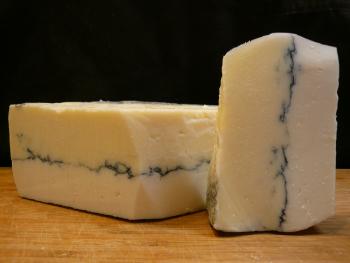Mobay
- Producer
- Carr Valley Cheese Company
- Country
- United States
- Region
- Wisconsin
- Size
- 10 ins diameter, 4 ins high
- Weight
- 10 lbs
- Website
- www.carrvalleycheese.com
- Milk
- Goat
Sheep - Classification
- Semi Soft
- Rennet
- Vegetable
- Rind
- Plastic

Located in the rolling hills of central Wisconsin, Carr Valley Cheese remains one of Wisconsin's most traditional cheese plants, famous for its Wisconsin cheddar varieties, as well as a host of more modern cheeses. Now owned and operated by Sid Cook, Carr Valley was founded in 1902, but the Cook family has been making cheese since 1883.
Sid is a fourth generation cheesemaker. The first cheese plant that his father operated was in Irish Valley, where Sid worked with his father for several years before taking over the business in the mid 70's. During this time Sid also learned how to make his own cultures from his father and grandfather. He and his brother made Wisconsin-style cheddar at that location for ten years, and Sid eventually purchased Carr Valley in 1986 and another cheesemaking facility in 1991, with a layout that would allow for more flexibility and the development of more styles of cheese.
Carr Valley now sources cow's milk from 40 farms, all located within 20 miles of the plant, and each milking no more than 70 cows. Sheep's milk comes largely from one dairy and goat's milk from a group of eight farms in the Green Bay area. Carr Valley makes over 65 different cheeses.
Mobay is Sid's version of the French cheese Morbier. Made in two halves, one from sheep's milk and one from goat's milk, the two halves are pressed together after production, but separated by a decorative line of ash running horizontally through the middle. There is
also a light dusting of ash on the rind.
The texture of Mobay is semisoft and supple. The color of the interior paste is bone-white, apart from the line of ash.
The flavor of Mobay is both delicate and rustic. The sweetness of the sheep's milk is balanced out by the bright tang of the goat's milk. It is interesting to try each layer separately and then together, for a variety of flavor profiles.



